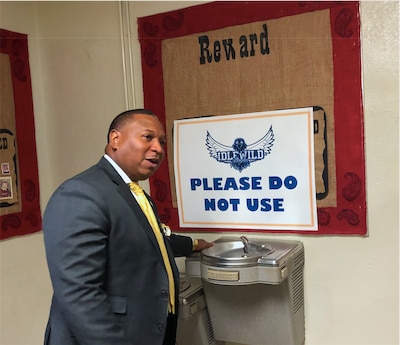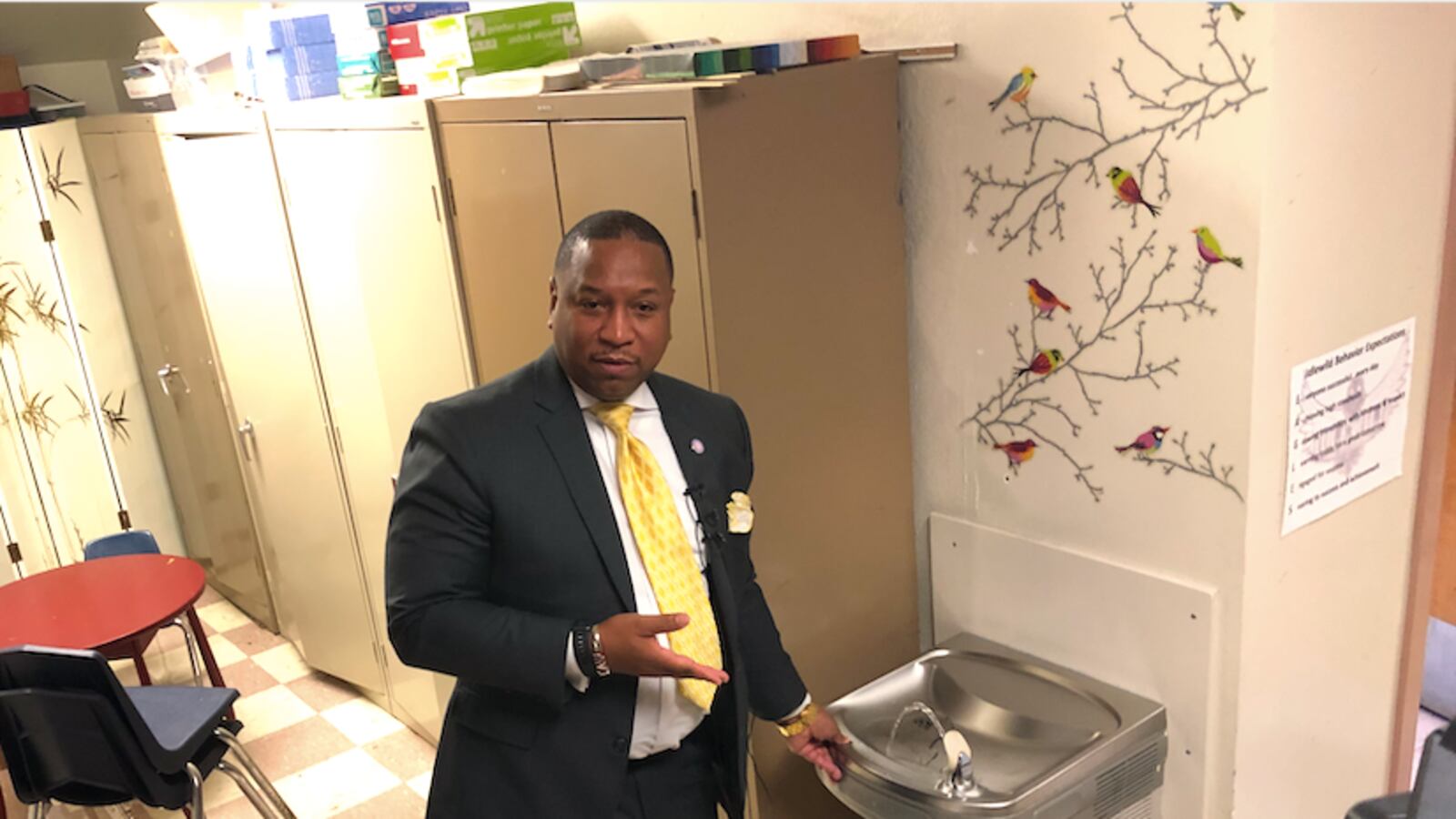Sixteen more Memphis schools were found to have at least one water source with high levels of lead in recent testing, Shelby County Schools announced Tuesday.
The third and last batch of water sample tests brings the total number of Memphis schools affected to 39, representing about 2% of water sources in the district’s 165 school buildings and facilities. Charter schools and state-run schools in Memphis will test their water separately, Shelby County Schools officials said.
Bending to take a drink from a water fountain at Idlewild Elementary School on Tuesday morning, Superintendent Joris Ray wanted to make a statement:
“The water is fine. The water is fine,” he said.

Down the hall, a water fountain near the front door was disconnected and had a large “Please do not use” sign. It was one of three at the Midtown school that tested for high levels of lead. One of those three had 30 times the state’s threshold for safe water, which is 20 parts of lead per billion parts of water. The threshold above which the federal government says water is unsafe is 15 parts per billion.
“Even if we had a child to come and try to use it, they can’t use it,” Ray said as he pushed in the fountain’s button to demonstrate that no water would come out.
The tests were the first under a new Tennessee law requiring school districts to test water sources such as water fountains and sinks for lead at least every two years. Deputy superintendent John Barker told reporters Tuesday the Memphis district went above the state requirement and also removed 16 water sources at 11 schools — including six schools not previously identified — that tested between 15 and 20 parts per billion.
For children, ingesting even low levels of lead can interfere with brain development, cause aggressiveness or inattentiveness, and impede academic achievement, according to the U.S. Environmental Protection Agency.
Below is a searchable table of all water test results that came back at levels higher than 15 parts per billion. (Source: Tennessee Department of Health and Shelby County Schools) Story continues below the table.
At least 18 U.S. states and Washington, D.C. require schools to perform water testing for lead, according to a recent study from the Harvard University School of Public Health. Most of those states enacted laws in response to the water crisis in Flint, Michigan, in 2014, where studies revealed about 100,000 residents were exposed to toxic levels of lead. Since then, that city’s school district has seen a spike in students with learning disabilities as a result and has struggled to keep up with the demand for services.
So far, more than 100 schools in 31 districts across Tennessee found at least one water source above 20 parts per billion.
Nearly a week after the state released the first test results from Shelby County Schools, parent Whitney Sykes said she hadn’t heard from the district that contaminated water sources had been disconnected.
“You hear about what happened in Flint, and it may not be to that extent [here], but you want your child to have access to water that is not contaminated,” she said Tuesday as she was dropping off her daughter, who is in fifth grade and has attended Idlewild Elementary since she was in kindergarten.
At the peak of the water crisis in Flint, 10% of high-risk water samples throughout the city tested above 20 parts per billion for lead. That’s compared with 2% of water samples in Memphis schools. As of 2017, 90% of those water samples in Flint tested below 6 parts per billion.
This story has been updated with schools with at least one water source between 15 and 20 parts per billion.


